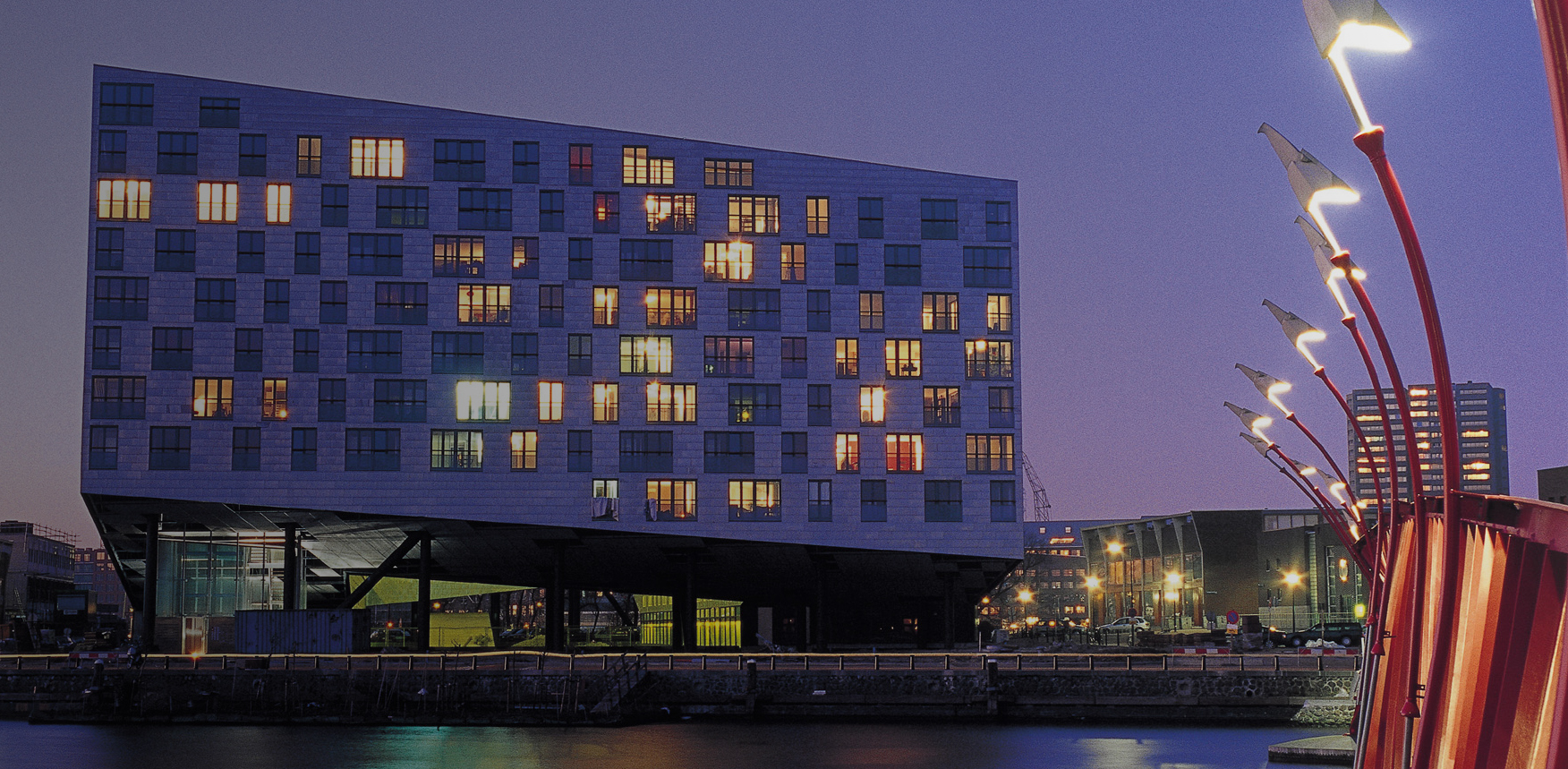Architects: Showcase your next project through Architizer and sign up for our inspirational newsletter.
As cities around the world struggle with solutions to the housing shortage that faces many communities, one urban building typology has been floated for decades that might increase housing units without reducing quality of life: low-rise, high-density. Emerging in the 1960s and 70s as an antidote to the severe “tower in the park” model offered by Le Corbusier and others, this housing typology had the potential to overcome some of the downsides of massive urban renewal in its emphasis on livable scale and community context.
Low-rise, high-density housing attempts to combine the best elements of both urban and suburban development schemes: a multitude of public transportation options, access to urban services, moderate scale, public open space and individualized dwellings. It can therefore reduce sprawl and efficiently use the limited space found in the urban environment, while also maintaining the street grid and pedestrian pathways.
The following projects show us a few contemporary examples of this building typology, which has the potential to mitigate housing issues and elevate previously neglected communities. From the inner cities of Canada to the posh streets of London, these innovative social housing projects display the low-rise, high-density typology’s great promise for future urban development.

© Peter Barber Architects

© Peter Barber Architects
Donnybrook Quarter by Peter Barber Architects, London, United Kingdom
The winner of a British housing design competition, this Peter Barber-designed social housing project in uber-expensive London is organized around two newly created tree-lined streets that parallel the surrounding neighborhoods. Residents’ balconies and windows overlook the public spaces in the complex on all sides, increasing the sense of safety and community for inhabitants.

© Atelier VongDC

© Atelier VongDC
Social Housing in Athis-Mons by Atelier VongDC, Athis-Mons, France
Featuring two complementary street and garden-facing façades, this social housing project in France draws inspiration from the post-war slab apartment buildings that characterized many European cities after World War II and the pre-war brownstone streetscapes of cities such as New York. The varying rhythm of the garden-facing façade is mirrored by the placement of balconies on the street side.

© craig sheppard photographer

© craig sheppard photographer
Queensway by Ayre Chamberlain Gaunt, Southampton, United Kingdom
Built as part of the city’s regeneration scheme, this subsidized social housing project in the U.K. features three different housing typologies, creating a diverse spatial configuration for the building’s inhabitants. The project has a mix of four-story townhouses, two-story mew houses, and three and four-bedroom apartments, allowing large families to take advantage of this housing opportunity. The different types of brickwork evoke the area’s industrial past while breaking up the building’s massed forms.

© de Architekten Cie.

© de Architekten Cie.
The Whale by de Architekten Cie., Amsterdam, Netherlands
The Whale is a high-density complex of apartments located in Amsterdam’s former industrial harbor that achieves 100 dwellings per hectare. The undulating roofline of this complex is echoed underneath, as the architects have raised the ground floor of the structure to allow light and air into an interior courtyard.

© Peter Barber Architects

© Peter Barber Architects
Hannibal Road Gardens by Peter Barber Architects, London, United Kingdom
Hannibal Road Gardens is another London social housing project by architect Peter Barber in the East End neighborhood of Stepney. The project replaces a row of parking garages that previously served the already existing housing estate and completes the fourth side to what was once a three-sided complex. The eight new townhouses feature at least two garden terraces and individual entrances for large families at subsidized prices.

© Gabriel Verd

© Gabriel Verd
46 Social Houses by Gabriel Verd, Sevilla, Spain
Set on a small plot in suburban Sevilla, this high-density housing project is organized around a courtyard with each apartment having visual access to both the street and the interior areas. The balconies extend the living spaces into the outside, while corrugated zinc panels in different alloys give the impression of changing light and texture on this low-cost material.

© Karakusevic Carson Architects

© Karakusevic Carson Architects
Claredale Street Housing by Karakusevic Carson Architects, London, United Kingdom
Working closely with community residents and the relevant agencies, the architects replaced an eight-story Brutalist housing estate that had low permeability and visibility with a new three-story housing block that increased the flow of pedestrians and connection to the surrounding neighborhood. The project redresses some of the inhospitable housing estates created in the Brutalist style.
Architects: Showcase your next project through Architizer and sign up for our inspirational newsletter.

 46 Social Houses
46 Social Houses  Claredale Street Housing
Claredale Street Housing  Donnybrook Quarter
Donnybrook Quarter  Hannibal Road Gardens
Hannibal Road Gardens  Queensway
Queensway  Social housing in Athis-Mons (Immobilière 3F)
Social housing in Athis-Mons (Immobilière 3F)  The Whale
The Whale 


